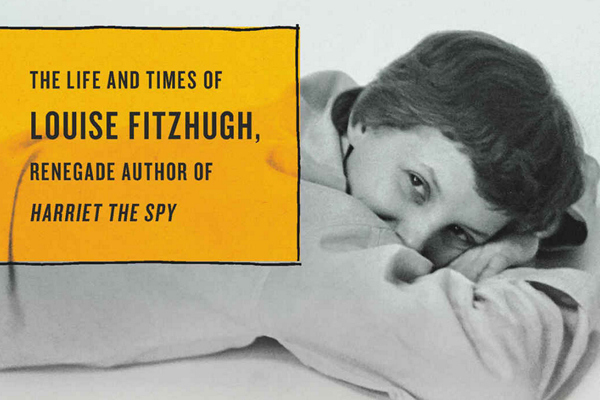‘Harriet the Spy’ Creator Was Fabulously Queer

‘Sometimes You Have to Lie: The Life and Times of Louise Fitzhugh, Renegade Author of Harriet the Spy’
By Leslie Brody
c2020, Seal Press
$30/335 pages
I love reading biographies – especially, of queer artists and writers. But some bios put you to sleep.
Happily, “Sometimes You Have to Lie” by Leslie Brody, the new, intriguing biography of queer artist and writer Louise Fitzhugh, author and illustrator of the beloved children’s book “Harriet the Spy,” won’t give you any shut-eye.
“Harriet the Spy,” since its publication in 1964, has been enjoyed by generations of kids and adults. It’s been made into a movie. Brody was hired in 1988 to write an adaptation of “Harriet the Spy” for the Minneapolis Children’s Theatre Company.
I discovered “Harriet the Spy” only recently as I read “Sometimes You Have to Lie.” What a great find!
Harriet, a sassy New York City kid, is a writer. Her nanny, Ole Golly, tells her that writers take notes on people. Harriet, notebook in hand, soon begins to “spy” on everyone – from her neighbors to her schoolmates.
As Fitzhugh, who was queer, wrote to her friend, gay poet James Merrill, Harriet is a “nasty little girl who keeps a notebook on all her friends.”
Harriet is fabulously “nasty!” She wears jeans, carries a tool belt on her waist and says “I’ll be damned if I’ll go to dancing school!”
Harriet is the queer love-child of Jo March and Holden Caulfield. She’s inspired thousands of hetero and queer readers to become spies and rebels (writers).
As it so often is with LGBTQ artists and writers (even creators of classics), I had no idea that Louise Fitzhugh, who lived from 1928 to 1974, was queer. Fitzhugh wasn’t just a lesbian. She was fabulously queer!
Fitzhugh was born in Memphis, Tenn. Her family was wealthy. Her parents, who met and wed quickly in a “jazz age marriage,” divorced when she was a baby. She was raised by her father Millsaps Fitzhugh and her eccentric, but loving grandmother.. For years, she was told that her mother had died. Later, Fitzhugh learned that her mother, who was denied custody and visitation rights, was alive. She was devastated to read in news accounts of her parents’ acrimonious divorce proceedings that during their quarrels her folks had thrown her (a baby) on to a couch.
As a teen, Fitzhugh had a boyfriend who thought of her as “beautiful” but “a little different from the other girls, a little bit more serious and very smart.”
He was right on all counts. Early on, Fitzhugh knew that she liked girls. As a teenager, she fell in love with photojournalist Amelia Brent. At the same time, she eloped with Ed Thompson, because he, like her, wanted to leave the Jim Crow South. Fitzhugh soon had a change of heart, the unconsumated marriage was annulled and she returned to Memphis.
She didn’t remain back home for long. Soon, Fitzhugh, 19, left to attend Bard to study poetry and painting. For the rest of her life, she lived in Greenwich Village in New York and later in Connecticut (while traveling to Rome and other locales). Over the decades, she had several loving, long-term, same-sex relationships. Fitzhugh was quite close to a male friend, but rebuffed his wish for sex, because she couldn’t “abide” a man “in her bed.”
Fitzhugh’s circle of vital, creative queer friends ranged from children’s book writer and illustrator Maurice Sendak to playwright Lorraine Hansberry. Jane Wagner, Lily Tomlin’s spouse, was among those who knew her.
I so wish I could have been part of this glittering 1950s queer life — until I realize how closeted queers had to be.
“As an adult, Fitzhugh was unapologetically out of the closet,” Brody writes.
Fitzhugh also was aware, Brody adds, that a “little lie to preserve your identity and self-respect can be a soul-saving measure.”
But, Fitzhugh knew that, as Ole Golly tells Harriet, “to yourself you must always tell the truth.”
“Sometimes You Have to Lie” is the fascinating story of the long-hidden truth about the life of the queer author of an iconic children’s book. Harriet wouldn’t be able to put it down.